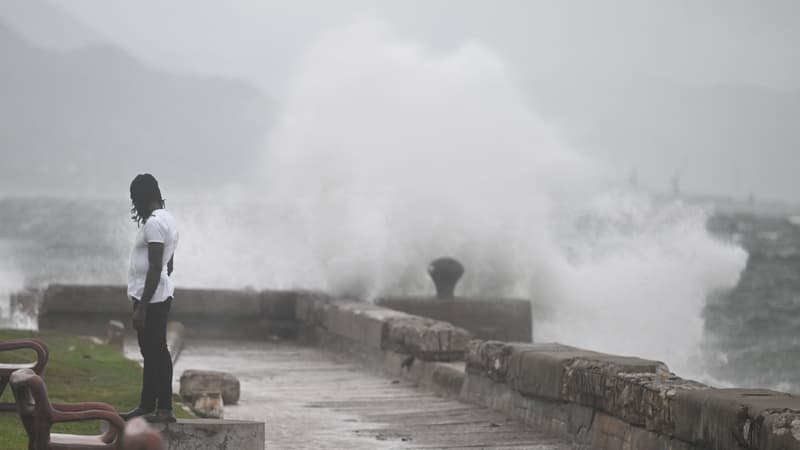Hurricane Melissa, which could be the most violent to make landfall in Jamaica and has already caused several deaths, is preparing to hit the Caribbean country on Tuesday, October 28, where it risks causing catastrophic flooding and landslides.
With winds of up to 280 kilometers per hour, the category 5 hurricane, the highest in the country, is already responsible for three deaths in Jamaica, three in Haiti and one in the Dominican Republic.
“Do not go out,” insists the American Hurricane Center (NHC), which predicts “life-threatening” storms, floods and devastation on a scale comparable to that caused by hurricanes Maria in 2017 or Katrina in 2005, in Puerto Rico and New Orleans.
Three dead while preparing for the arrival of the hurricane
According to local authorities on Monday, three people died in Jamaica while preparing for the hurricane’s arrival, cutting branches and working on ladders.
If it does not lose intensity, it will be the most powerful hurricane to make landfall in Jamaica since meteorological monitoring began.
Prime Minister Andrew Holness warned of risks of particularly serious damage in the west of the country.
“I don’t think any infrastructure in this region could withstand a Category 5 hurricane, so there could be significant destruction,” he told CNN, calling on residents to evacuate the highest-risk areas.
Open shelters for the population
But, by their own admission, many residents refuse to follow these instructions. “I just don’t want to leave,” explains Jennifer Ramdial, a fisherman, found by AFP on Monday in Port-Royal, a small coastal town near the capital, Kingston.
“Even if it were a category 6, I wouldn’t move,” agrees Roy Brown, a plumber and tiler, although the Saffir-Simpson scale stops at category 5. According to him, many people refused to flee because of bad experiences in the hurricane shelters offered by the authorities.
And AI-generated videos downplaying the hurricane threat have invaded social media, AFP found Monday, showing residents partying or riding jet skis. “I see all these videos circulating. Many of them are fake,” responded Dana Dixon, the Minister of Information.
At least four dead in Haiti and the Dominican Republic
In Saint-Thomas, in the east, about sixty people took refuge in the primary school, AFP noted. According to the Prime Minister, there are 881 shelters open for the island’s 2.8 million residents.
The hurricane, which has been developing for several days in the Caribbean, has already killed at least four people in Haiti and the Dominican Republic.
In Jamaica, Melissa is expected to cause a coastal submergence of up to four meters on Tuesday, threatening flooding on the country’s southern coast, as well as torrential rains in the interior, warned Michael Brennan, director of the NHC.
“Everyone in Jamaica must now be in a safe place to stay until the storm passes tomorrow,” he warned on Monday night.
The rain is already here, as gusts of wind, and “it’s getting worse by the hour,” Esther Pinnock, communications officer for the Jamaica Red Cross, told AFP on Monday afternoon.
The concern is all the greater since Hurricane Melissa is moving at very low speed, 4 km/h. Therefore, torrential rains and strong winds could last forever.
A phenomenon aggravated by global warming
Furthermore, Esther Pinnock emphasizes, the soils are already heavy, waterlogged after the rains of the previous weeks, which aggravates the risk of landslides. For climatologist Daniel Gilford, climate change is also aggravating “all the most damaging aspects of Hurricane Melissa.”
“It leads to greater rainfall and coastal flooding and with greater intensities than would have been observed in a world without climate change,” the expert insists to AFP.
The last major hurricane to make landfall in Jamaica was Hurricane Gilbert in September 1988, which killed 40 people and caused enormous damage.
As Hurricane Melissa approached, Jamaican authorities closed the ports and international airport.
Melissa is due to arrive early Wednesday in Cuba, where authorities have begun closing schools and evacuating residents, while a lack of electricity prevents proper distribution of warning messages.
Continuing its course northward, the hurricane could then affect the southern Bahamas and the archipelago of the Turks and Caicos Islands, a British territory.
Source: BFM TV


